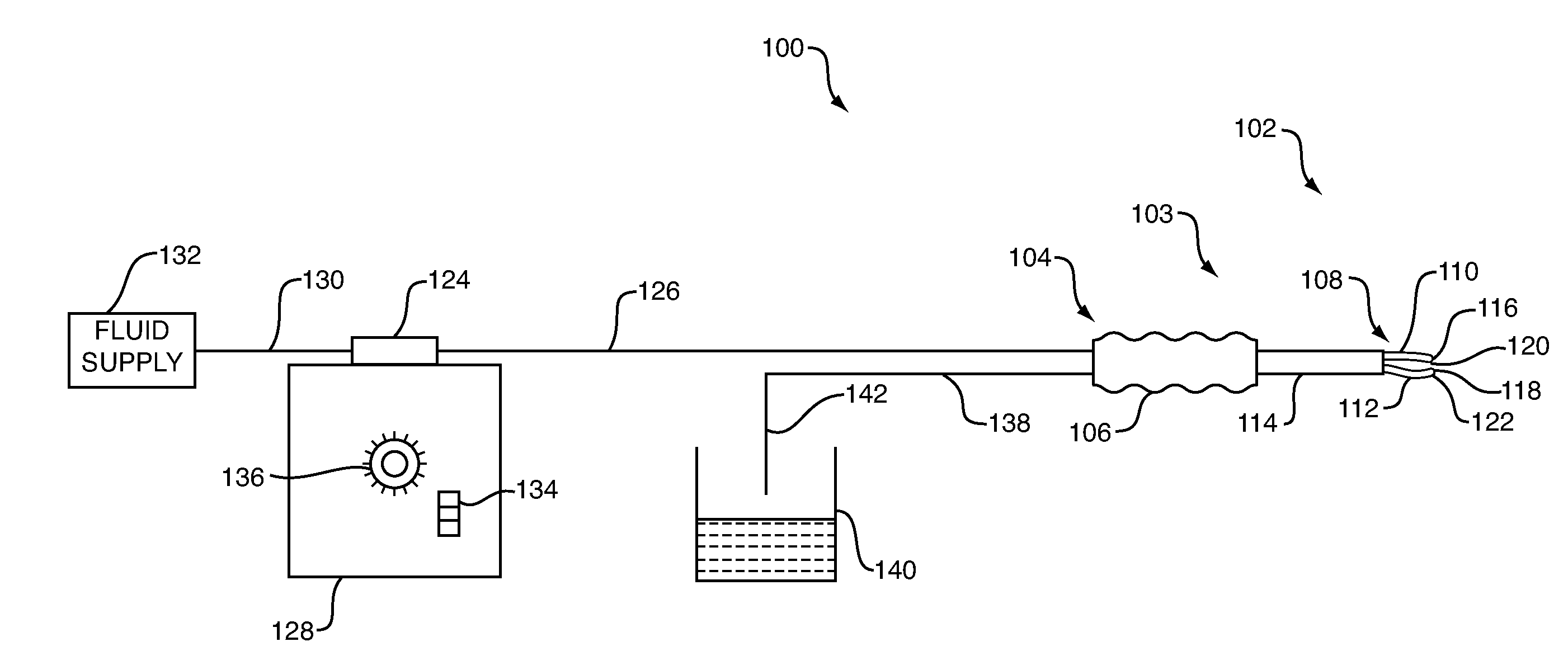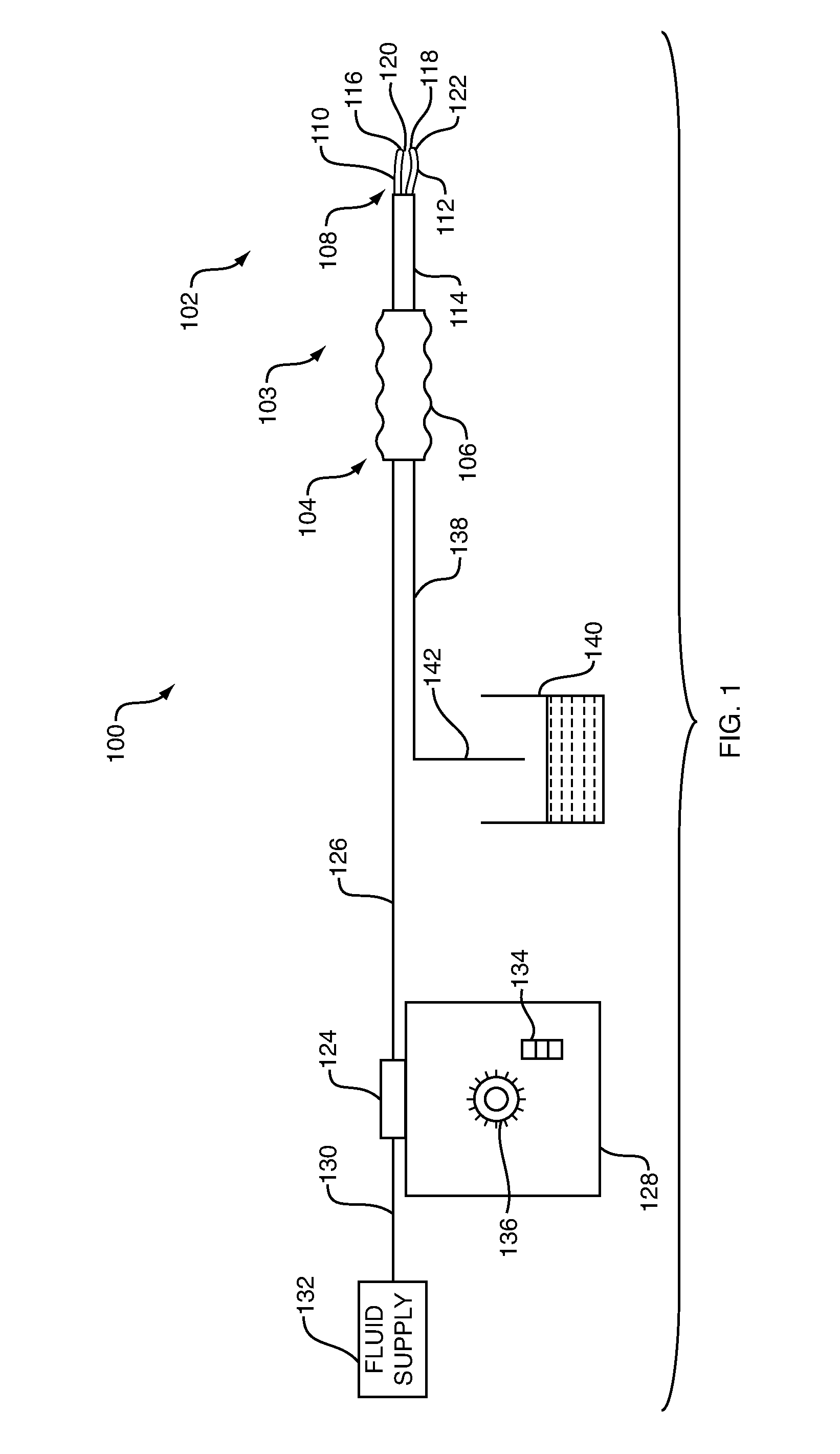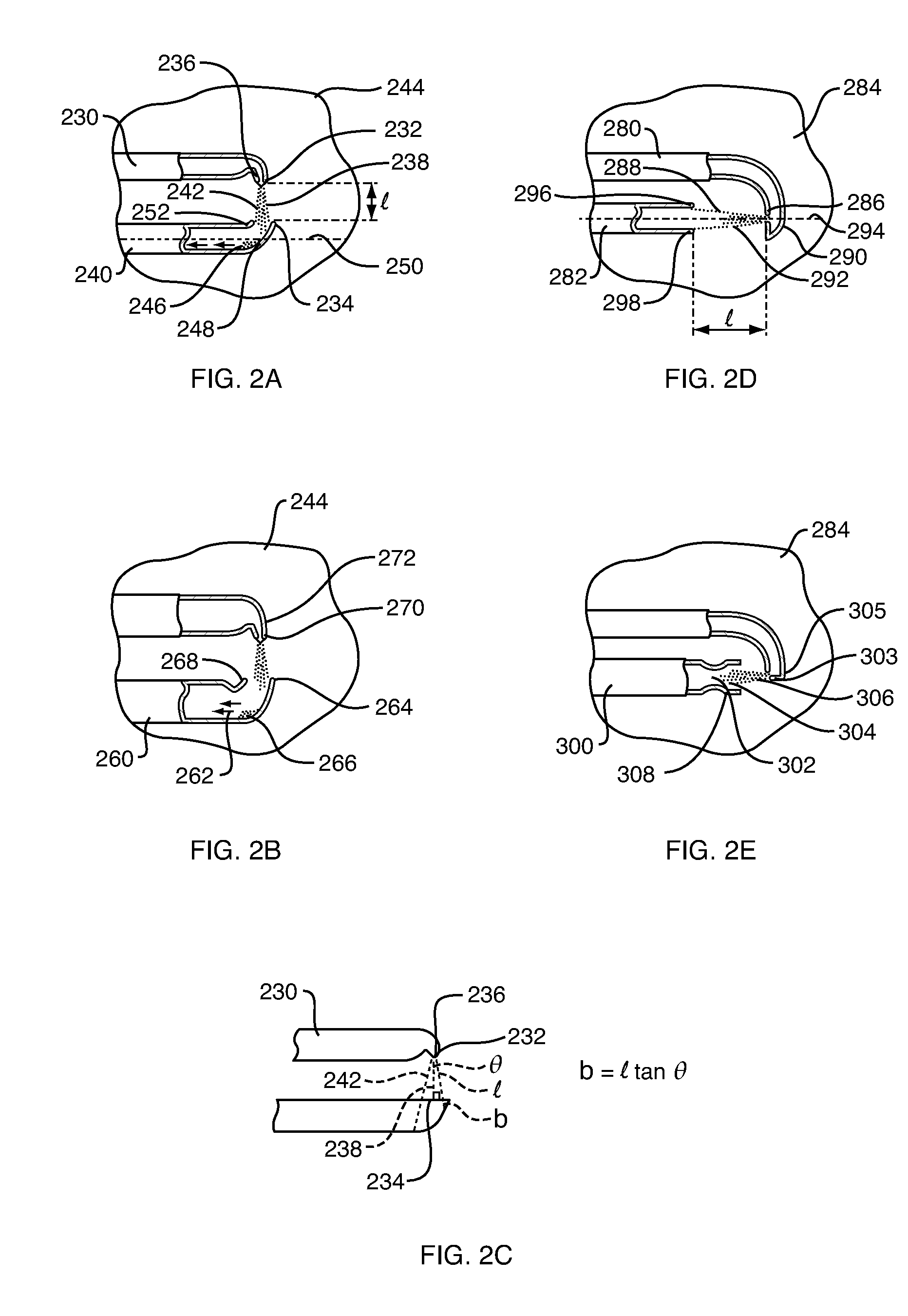Liquid jet surgical instrument
a surgical instrument and liquid jet technology, applied in the field of surgical instruments, can solve the problems of poor tissue differentiation capability, inadvertent damage to tissue surrounding a surgical treatment site, extensive trauma to the patient, etc., to reduce inadvertent avoid thermal damage to surrounding tissues, and improve tissue differentiation
- Summary
- Abstract
- Description
- Claims
- Application Information
AI Technical Summary
Benefits of technology
Problems solved by technology
Method used
Image
Examples
Embodiment Construction
[0038]The present invention provides a variety of liquid jet instruments useful in a variety of applications, many of which are especially well suited for a variety of surgical procedures. The liquid jet instruments provided by the invention can be configured in a variety of different ways for use in various surgical operating fields. Certain surgical instruments, according to the invention, are configured as surgical handpieces having a proximal end with a grasping region, or handle, shaped and configured to be comfortably held in the hand of an operator. The instruments also have a distal end that includes at least one nozzle for forming a liquid jet. The distal end of the inventive surgical instruments is used to perform a surgical procedure on a patient. Although the liquid jet instruments described herein are shown as having a handpiece configuration, it should be understood that the invention is not strictly limited to surgical handpieces, and that the invention may also be pr...
PUM
 Login to View More
Login to View More Abstract
Description
Claims
Application Information
 Login to View More
Login to View More - R&D
- Intellectual Property
- Life Sciences
- Materials
- Tech Scout
- Unparalleled Data Quality
- Higher Quality Content
- 60% Fewer Hallucinations
Browse by: Latest US Patents, China's latest patents, Technical Efficacy Thesaurus, Application Domain, Technology Topic, Popular Technical Reports.
© 2025 PatSnap. All rights reserved.Legal|Privacy policy|Modern Slavery Act Transparency Statement|Sitemap|About US| Contact US: help@patsnap.com



